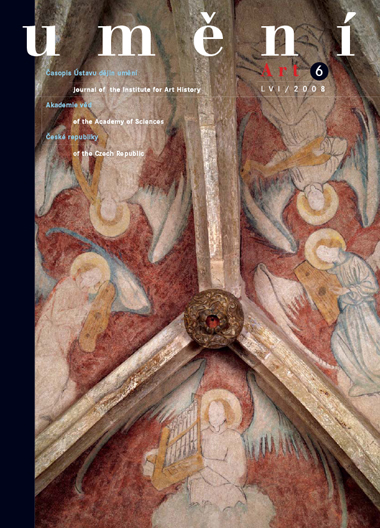Jiří Černý
Der Gebrauch der ältesten Einblattdrucke in Böhmen und Mähren: Das Publikum und sein Verhältnis zum gedruckten Bild bis etwa 1475
Within the body of print work known to have survived to date in Bohemia and Moravia it is possible to identify some circles that, in the second and third quarters of the 15th century, included single-leaf prints in their books. On this basis it is possible to determine the provenience of the volumes, and it is not unusual to come across manuscripts in Czech to which prints were added. The pasted images are sometimes accompanied by text commentary added later in the user's native language. Monasteries, cloisters, and church institutions were the largest consumers. A specific local feature is the discovery of prints in the manuscripts of the Utraquists and the masters of the Protestant Academy. The print The Stigmatisation of Saint Francis (Schreiber 2626) decorated the psaltery of a wealthy lady from the ranks of the Czech aristocracy or nobility. The clientele for prints in Bohemia and Moravia treated single-sheet prints in a completely matter-of-fact way. Single-sheet prints fulfilled the function of an 'amulet' or protective image, or were pasted in the place of illustrations. A xylograph with with the sacred monogram, from Olomouc, was probably part of the propaganda of local Franciscans. Users had no qualms about taking a paintbrush or pen or even a knife or scissors if they needed to modify it in some way for their own needs. It has been impossible to find evidence of a single print workshop in Bohemia or Moravia. It seems that all the single-sheet prints in local collections are imports. This claim is supported both by the low quality of the accompanying illustrations in the first Czech and Moravian printed books and by the complete absence of themes or iconography in the prints relating to the Czech lands. We can moreover find several duplicate prints to works from foreign collections and copies of or variations on them. It appears that the Czech and Moravian user public bought single-sheet prints from studios or through intermediaries from neighbouring countries.
Full-text in the Digital Library of the Czech Academy of Sciences:
https://kramerius.lib.cas.cz/uuid/uuid:77312387-a84a-314e-0d6f-f7f4daeebd90
< back

